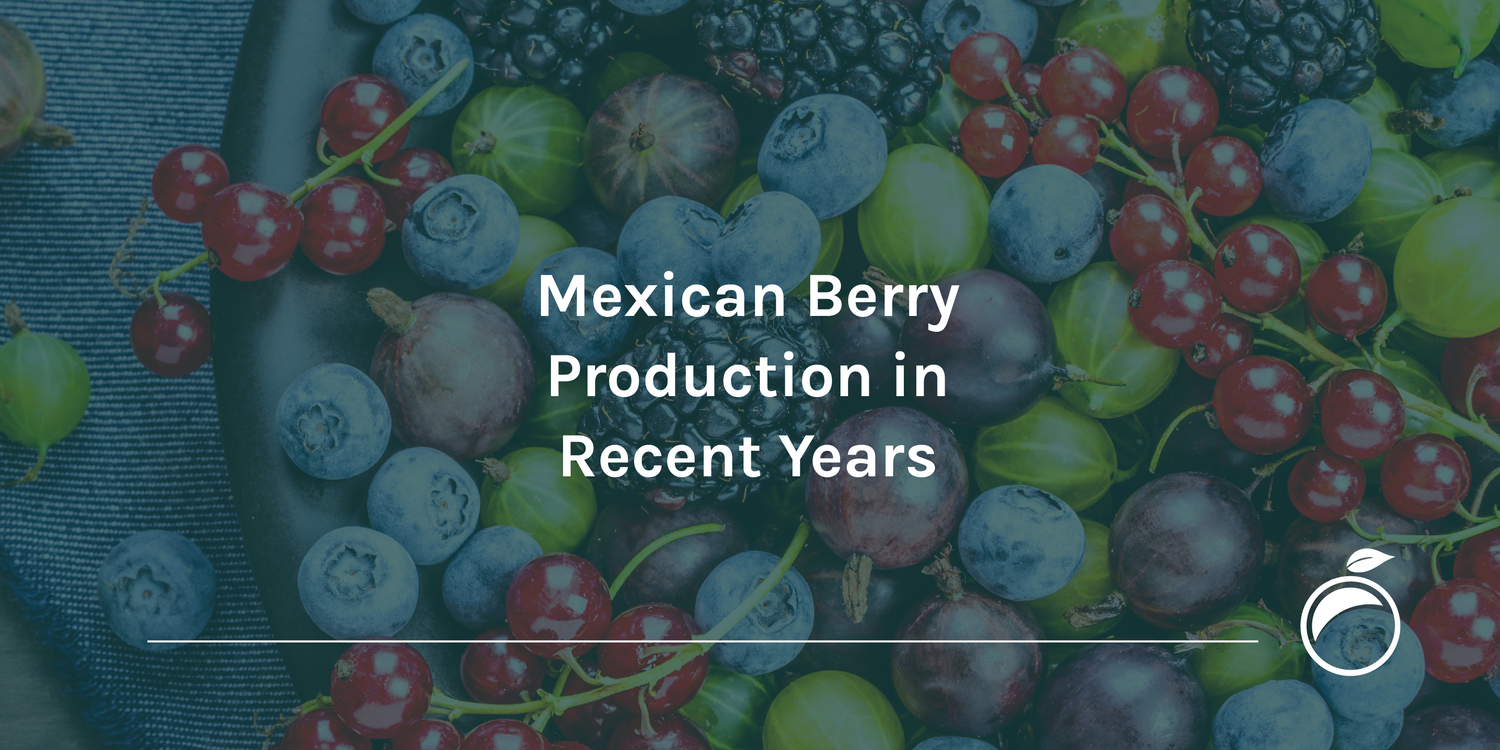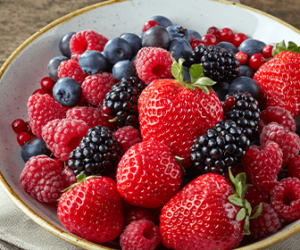
Mexican Berry Production in Recent Years
Together, berries are currently the 3rd most exported agri-food product by Mexico, behind beer and avocado. The total export value of berries was $3,005 million USD in 2020 (beer and avocado reached $4,685 and $3,153 million USD).
From 2015 to 2019, domestic production of berries increased considerably, from 596,592 to 1,337,207 tons, respectively. However, in 2020 there was a significant drop in production, with only 970,080 tons produced, or 27.5% less compared to 2019.
This decrease was due to a loss of 5,833 hectares of harvested area, dropping from 40,677 to 34,844 hectares between 2019 and 2020.
In 2019, the highest historical annual yield was reached at 32.9 tons per hectare, which fell in 2020 to 27.8 tons per hectare, primarily due to an atypical year with drought conditions in most of the country during the first half of the year followed by a season of heavy precipitation.
For mexican berries, the average price per ton in 2020 was $27,012 Mexican pesos, while in 2019 the highest historical price was reached at $31,050 pesos. This means that the value of domestic berry production fell by 36.7%, dropping from $41,520 to $26,204 million pesos between 2019 and 2020.
In 2020, Michoacán led berry production with 569,183 tons (58.7%), followed by Jalisco with 144,656 tons (14.9%), Baja California with 120,539 tons (12.4%), and Guanajuato with 100,446 tons (10.4%). These four states produced 96.4% of Mexican berries.
Strawberries
Strawberries were the main crop responsible for the general drop in berry production in Mexico, decreasing by 35.3% between 2019 and 2020, from 861,337 to 557,514 tons. In the first trimester of 2020, Michoacán was already reporting a decrease of 21.0% compared to the same period in 2019, and this decrease continued during the rest of the year. The coronavirus was blamed for the drop in production, as it affected normal trade line operation, although it’s also important to note that harvested areas are slowly moving to higher-altitude regions where volume and quality are better.
Michoacán contributed 59.0% of domestic strawberry production, while Baja California and Guanajuato contributed 18.9% and 17.5%, respectively. These three states are only ones with significant strawberry production.
Blackberries
Blackberries also saw a drop in production in 2020 compared with 2019, going from 298,024 to 215,924 tons (a decrease of 27.5%). Michoacán dominates, with 93.2% of total production, and Jalisco is a distant second at 5.0%.
The logistic complications derived from Covid affected blackberries, and additionally, this crop is currently undergoing varietal replacement. The public variety Tupy, which still holds the majority in terms of planted area, has been in jeopardy for several years due to Fusarium and other soil pathogens.
Most of the main exporting companies already have proprietary or exclusive varieties in pursuit of higher yields and better quality. Over several years there will be a process of trial and error, since not all varieties adapt well to the areas of cultivation. In about 3-5 years, production may show an unprecedented rise.
Blueberries
Compared to strawberries and blackberries, blueberries did not present a decrease in domestic production. In fact, there was a slight increase of 2.6%, going from 48,999 tons in 2019 to 50,293 tons in 2020.
Similar to the blackberry, the blueberry is in a period of varietal replacement, swapping the public Biloxi variety for private varieties. Many companies already have proprietary varieties, while others purchase theirs from well-known nurseries.
In 2020, Jalisco led blueberry production (46.1%), followed by Michoacán (19.4%), Sinaloa (16.9%), and Baja California (8.0%).
Raspberries
Raspberries saw the greatest increase in production in 2020, reaching a historical peak of 146,350 tons, or 13.6% more than the 128,848 tons produced in 2019. Jalisco led with 71.1% of domestic raspberry production, while Michoacán produced 19.7% and Baja California produced 7.0%.
The demand for raspberries in the US market remained constant, so it was perhaps the berry least affected by logistic problems caused by the pandemic. Additionally, several companies have developed new varieties that have adapted very well to the climate and soil conditions of the cultivation zones.
Berries will continue to flourish
Mexican berries, and their abundance of antioxidants, have a promising future for the next decade as consumption will continue to increase in developed countries like the United States. In the US, while there are areas appropriate for cultivation, market demand far exceeds domestic production. This means that import volumes (mainly from Mexico) will continue to increase year after year.

